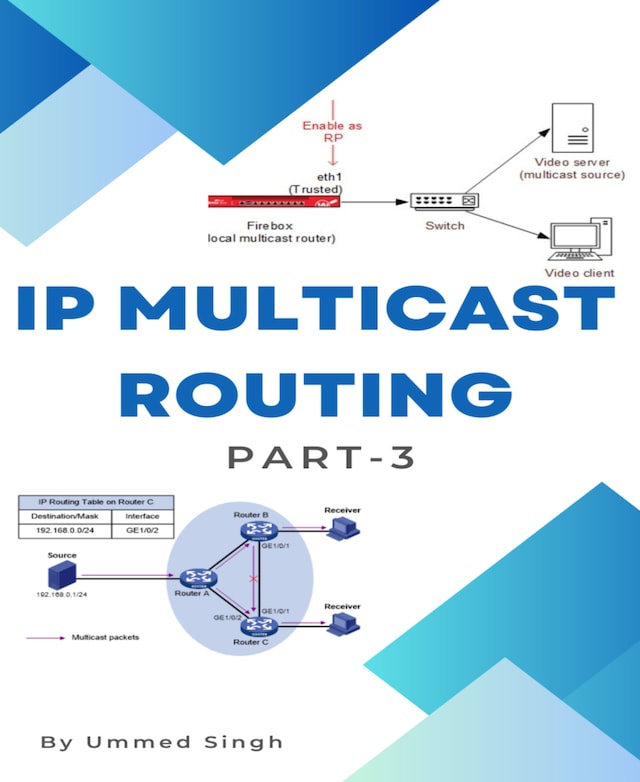
IP MULTICAST ROUTING Part -3
Use of multicast routing.
Description of the book
IP multicast routing is a technique used in computer networks to efficiently deliver data packets from a single sender to multiple recipients. It is specifically designed for applications where data needs to be distributed simultaneously to a group of interested receivers. In traditional unicast communication, a sender sends packets to individual receivers using their unique IP addresses. This creates a point-to-point connection between the sender and each receiver, resulting in duplicate transmissions if multiple receivers are interested in the same data. Unicast is inefficient for one-to-many or many-to-many communication scenarios. Multicast routing, on the other hand, allows a sender to transmit a single copy of a packet, and network routers replicate and forward it to all interested receivers. This saves network bandwidth and processing resources, as the data is distributed only once. Multicast routing uses special IP multicast addresses, typically in the range of 224.0.0.0 to 239.255.255.255, to identify multicast groups. To enable IP multicast routing, routers in the network need to support multicast routing protocols such as Protocol Independent Multicast (PIM). These protocols enable routers to exchange information about multicast groups and determine the optimal path for forwarding multicast traffic. Routers maintain multicast routing tables that specify the outgoing interfaces and next-hop routers for forwarding multicast packets. When a sender wants to send data to a multicast group, it encapsulates the data in a multicast packet and sets the appropriate multicast IP destination address. The routers along the path use the multicast routing tables to determine how to forward the packet to all interested receivers. Receivers interested in receiving multicast data join the multicast group by sending a membership request to the nearest router. The router adds the receiver to the multicast distribution tree, and subsequent multicast packets are forwarded.
 Ummed Singh
Ummed Singh 30 Pages
30 Pages